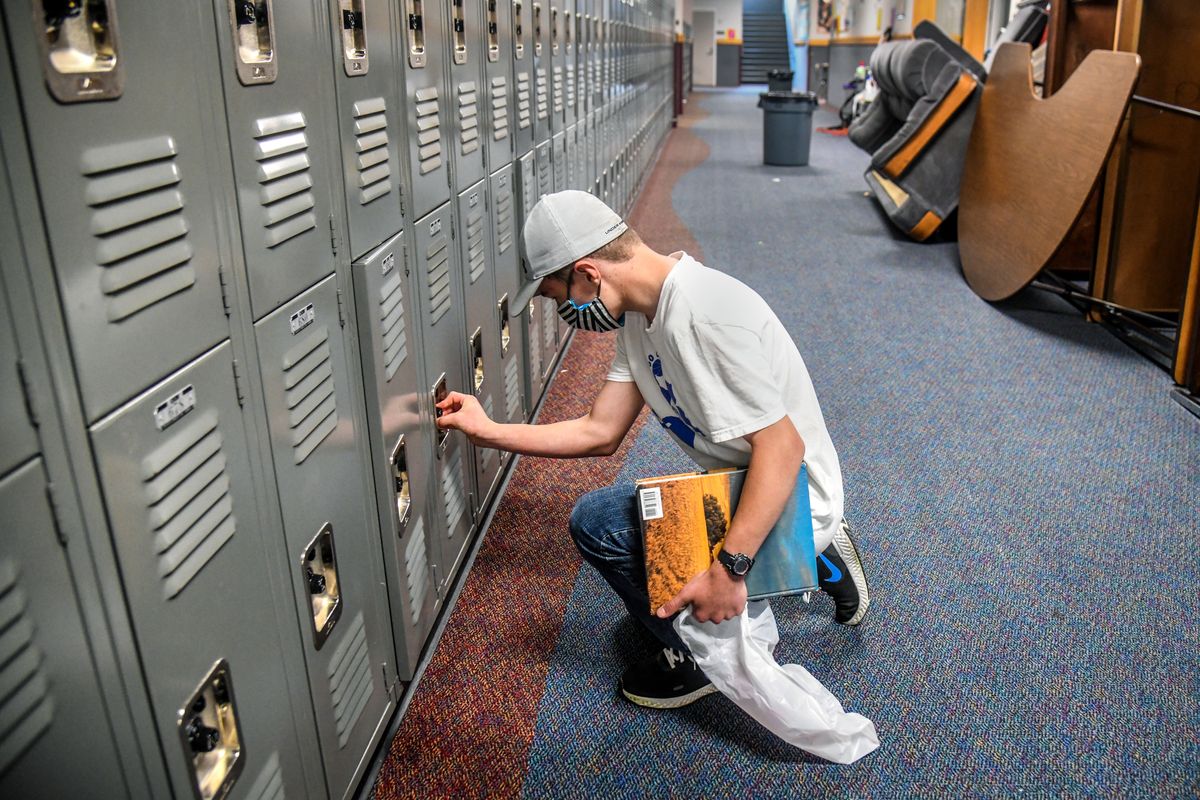State expects public schools will be open this fall, with masks and distancing

Declaring Thursday that he expects schools will be open for full-time face-to-face instruction, state superintendent Chris Reykdal also told districts how to make that happen.
“What we are sharing is a presumption that we are coming back,” Reykdal said during a virtual news conference from Olympia. “But it won’t be business as usual.”
And it won’t be easy.
Students and staff and everyone else must continually wear masks and practice social distancing and hygiene protocols. Even if schools manage to comply, their efforts would be moot if COVID-19 cases spike in a given area.
If that happens, Washington State Office of Superintendent of Public Instruction, or OSPI, also has several backup plans, which were detailed in a 55-page booklet issued Thursday morning.
The details will be left to individual districts that will be expected to submit a reopening plan to OSPI no later than two weeks before the first day of school.
“We’ve been eagerly anticipating getting that document, and it’s pretty dense,” Spokane Public Schools Superintendent Shelley Redinger said. “But it’s pretty vague at the same time.”
Redinger said she was “excited that the overarching goal is the get our students back face-to-face.”
Redinger and other district officials acknowledged that there’s plenty of work ahead, beginning with a task force meeting later Thursday afternoon.
Reykdal made his goals clear.
“The best thing we can do is to get back to school,” Reykdal said. “In fact, I’m telling you today that we are building a framework for schools to open this fall.”
Reykdal said he believes that framework could be stronger than ever, especially for the quality of distance learning.
“This was forced on us,” Reykdal said, recalling the confused early days of the school closures in mid-March. “This is a chance to reform our system.”
Reykdal’s optimism is an about-face from guidance issued last month, when a “back-to-normal” scenario was dismissed by OSPI as unlikely.
Reykdal praised state officials and citizens – “the incredible response of Washingtonians,” he called it – in flattening the coronavirus infection curve during the last few weeks.
Drawing on the work of a 123-member task force formed three weeks ago, Reykdal covered a variety of topics, including the mechanics of transportation, building facilities, nutrition and the nuts and bolts of in-class instruction.
Included in the 55-page document released Thursday is a statement that “This guidance is grounded first and foremost in the public health science and data provided by the state Department of Health (DOH).”
“DOH is providing the regulatory framework when it comes to hygiene, physical distancing, and other public health considerations,” the document continued.
Reykdal offered a few examples. Buses might still be full, but with the windows open and everyone wearing masks.
“And they wouldn’t be together for 6 1/2 hours in a bus,” Reykdal said.
Classrooms would be reconfigured, with desks spaced farther apart.
Noting that the average classroom is about 900 square feet, Reykdal said, “We are going to have to do something different.
“It’s going to look sterile for a year. And teachers, you’re going to have to use a tape measure to help us out.”
Reykdal also echoed state and local health officials in urging parents to resist the urge to send children to school if they’re “slightly ill.”
“That’s not an option,” Reykdal said.
Local educators have already done some homework on social-distancing challenges.
Redinger said that Spokane has looked at practices in other countries, “looking at whether we need to use our spaces differently than we have … using every nook and cranny, and using our gyms and cafeterias.”
Districts will have three other options should full-time, face-to-face learning prove unsafe or impracticable:
• A split or rotating schedule. Because many classrooms are too small to accommodate a full class, students would rotate on a daily or weekly basis. This type of flexible schedule would give equitable access to students requiring additional support and consistent schedules for families, students, teachers, community child care, tutoring and activities. Students in the same family follow the same schedule.
• Phased-in opening. Some school facilities open for some groups of students, while others remain closed until a later date or certain community characteristics are met. For example, younger students would begin first, filling all district buildings until it’s deemed safe to add secondary students. The phase-in also could prioritize at-risk students, English learners and other groups.
• Continuous Learning 2.0. This would be an enhanced version of distance learning that took place in spring 2020. According to the booklet issued Thursday, “This model should be used only when it is not safe for any large groups of students or staff to be in their school buildings together.”